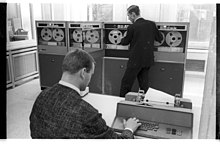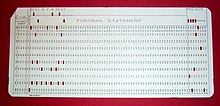Computer Operation Level-3 Suggestion V-11
Written Test Computer Operation Level-3 Suggestion V-11 by Job Edu BD
First, test yourself with the following MCQs, if you can’t do it, you can check the answer by clicking on the answer button.
Computer Operation Level-3 Suggestion V-11.
1. Which one is not a valid source for client requirements?
- Related association
- Any person
- Related Bank
- Local authority
2. Estimating for time, cost and delivery product & Service means-
- A broad look at the project as a whole
- Break-even cost calculation
- Determined the time frame of the project
- Established a plan for delivery products
3. Which one is not the part of a Computer system unit?
- Processor
- Router
- RAM
- ALU
4. Which one of the following is an input device?
- Monitor
- Speaker
- Printer
- Scanner
5. What is the advantage of saving a document in the “RTF” (Rich Text Format) file format?
- It supports macros and automation.
- It preserves complex formatting.
- It reduces the file size.
- It allows password protection.
6. Which of the following is not a type of page margin?
- Normal
- Narrow
- Moderate
- Middle
7. To create an ID card using word processing software. Which is most important?
- Insert & Modify shape
- Page Layout
- Insert Header & footer & modify them
- Insert and Modify Picture
8. Which ribbon includes the command for inserting charts that illustrate or compare data?
- Draw
- Home
- Insert
- Design
9. The keyboard shortcut to stop media playback?
- Alt + S
- Alt + T
- Esc
- Alt + Q
10. Excel is a_____________ program developed by Microsoft.
- Spreadsheet
- Document
- Data management
- All of the above
11. Which logical function returns TRUE if all arguments evaluate TRUE; FALSE if not?
- OR
- AND
- IF
- ANDIF
12. Which function is used to create a date with year, month, and day?
- DATE()
- DATEDIF()
- DATEVALUE()
- CURDATE()
13. Which memory is faster?
- Cache
- RAM
- ROM
- SSD
14. A Processor unit, a memory unit, and an 1/0 system form a/an:
- Central Processing Unit
- Arithmetic Lo
- Control Unit
- Microcomputer
15. Zoom, Google Meet, Microsoft Team etc. are the:
- Validate sources for customer requirements
- Channels of communication
- Way of Communication
- Procedure of communication
16. In customer service, etiquette refers to:
- GOOD interpersonal communication with clients
- listening skills to understand and respond to customers’ needs
- Verbal & Non-verbal Communication skills
- All of above
17. ______is used to customize how your presentation will look as a printed handout.
- Slide Master View
- Handout Master View
- Notes Mater View
- None of the above
18. Which option/feature is used to avoid showing all of the elements of a slide at once?
- Hide slide
- Build slide
- Turn off animations
- Normal view mode
19. To set the transition speed, select
- Transitions > Timing Group > Duration Box
- Transitions > Transitions Duration
- Transitions > Transitions Timing Duration Box
- None of the above
20. During the slide show, which shortcut key is used to view the computer taskbar?
- Ctrl + Shift + Del
- Ctrl + T
- Shift + T
- Alt + T
21. What is the meaning of “Booting” in the system?
22. Mention the use of Snipping Tool.
23. What is the meaning of “Booting” in the computer system?
24. What does the Orientation option under the Page Layout tab allow you to change?
25. How can you access printing settings in Microsoft Word?
1. Which one is not a valid source for client requirements?
B. Any person
2. Estimating for time, cost and delivery product & Service means-
A. A broad look at the project as a whole
3. Which one is not the part of a Computer system unit?
B. Router
4. Which one of the following is an input device?
D. Scanner
5. What is the advantage of saving a document in the “RTF” (Rich Text Format) file format?
B. It preserves complex formatting.
6. Which of the following is not a type of page margin?
D. Middle
7. To create an ID card using word processing software. Which is most important?
A. Insert & Modify shape
8. Which ribbon includes the command for inserting charts that illustrate or compare data?
C. Insert
9. The keyboard shortcut to stop media playback?
C. Esc
10. Excel is a_____________program developed by Microsoft.
A. Spreadsheet
11. Which logical function returns TRUE if all arguments evaluate TRUE; FALSE if not?
B. AND
12. Which function is used to create a date with year, month, and day?
A. DATE()
13. Which memory is faster?
A. Cache
14. A Processor unit, a memory unit, and an 1/0 system form a/an:
D. Microcomputer
15. Zoom, Google Meet, Microsoft Team etc. are the:
B. Channels of communication
16. In customer service, etiquette refers to:
D. All of above
17. ___________________is used to customize how your presentation will look as a printed handout.
A. Slide Master View
18. Which option/feature is used to avoid showing all of the elements of a slide at once?
B. Build slide
19. To set the transition speed, select
A. Transitions > Timing Group > Duration Box
20. During the slide show, which shortcut key is used to view the computer taskbar?
B. Ctrl + T
21. What is the meaning of “Booting” in the system?
Booting in the system means a computer is to load an operating system (OS) into the computer’s main memory or RAM.
22. Mention the use of Snipping Tool.
To take a snapshot from a document or images from all or part Of Pc.
23. What is the meaning of “Booting” in the computer system?
to load an operating system (OS) into the computer’s main memory or RAM
24. What does the Orientation option under the Page Layout tab allow you to change?
Hints: It allows you to switch between portrait and landscape page orientations.
25. How can you access printing settings in Microsoft Word?
Hints: File tab > Print or Ctrl + P (keyboard shortcut)
"You will pass just by asking the mentioned questions, it's not like that at all, but chances are upto 80% to get common. This is just a suggestion. This question is not copied from any board question"
A computer operator is a role in IT which oversees the running of computer systems, ensuring that the machines, and computers are running properly. The job of a computer operator as defined by the United States Bureau of Labor Statistics is to “monitor and control … and respond to … enter commands … set controls on computer and peripheral devices. This Excludes Data Entry.”
Overview
The position has evolved from its beginnings in the punched card era. A Bureau of Labor Statistics report published in 2018 showed that, in the public sector, a major employer of those categorized as Computer Operator was United States Postal Service. In the private sector, companies involved in data processing, hosting, or related services employed computer operators at an even higher rate. The states with the highest employment for computer operators, as of 2018, are: New York, Texas, California, New Jersey, and Florida.
Job role description
The former role of a computer operator was to work with mainframe computers which required a great deal of management day-to-day including manually running batch jobs; however, now they often work with a variety of different systems and applications. The computer operator normally works in a server room or a data center, but can also work remotely so that they can operate systems across multiple sites. Most of their duties are taught on the job,[citation needed] as their job description will vary according to the systems they help to manage.
Responsibilities of a computer operator may include:
- Monitor and control electronic computer and peripheral electronic data processing equipment to process business, scientific, engineering, and other data according to operating instructions.
- Monitor and respond to operating and error messages.
- May enter commands at a computer terminal and set controls on computer and peripheral devices.
- Excludes “Computer Occupations” (15-1100) and “Data Entry Keyers” (43-9021).
The role also includes maintaining records and logging events, listing each backup that is run, each machine malfunction and program abnormal termination. Operators assist system administrators and programmers in testing and debugging of new systems and programs prior to their becoming production environments.
Modern-day computing has led to a greater proliferation of personal computers, with a rapid change from older mainframe systems to newer self-managing systems. This is reflected in the operator’s role. Tasks may include managing the backup systems, cycling tapes or other media, filling and maintaining printers. Overall the operator fills in as a lower level system administrator or operations analyst. Most operations departments work 24×7.
A computer operator also has knowledge of disaster recovery and business continuity procedures. Formerly, this would have meant sending physical data tapes offsite, but now the data is more than likely transmitted over computer networks.
Specializations
Console operator
A console operator interacts with a front panel or a multi-user system’s console
- entering system commands via a keyboard
- entering commands for a subsystem, e.g., HASP, via a keyboard
- replying to requests for information
- taking actions such as mounting computer tapes that were “pulled” by a tape librarian
- supervising a tape operator, especially when there is a non-specific mount request.
These individuals would be trained to use specialized equipment related to their duties.
Beyond the IBM System/360 era
One example of specific hardware used by a console operator is the IBM 3066 Model 2 system console, which included a light pen[citation needed] as an interface device. Other then-new features were:
- replaced “most switch, pushbutton, and indicator functions”
- as with the 165’s Model 1, had a microfiche document viewer, a feature introduced for the 360/85’s console.
A console printer (up to 85 characters per second) to provide hard copy was optional when the console was in display mode, and required when it was in printer-keyboard mode.[citation needed]
Peripherals operator
A peripherals operator uses dedicated peripheral equipment connected to computer(s) such as printers, scanners, or storage devices for data transfer to and/or from computers.
Tape operator

Historically, tape operators were in charge of swapping out reels of paper tape, reels of magnetic tape or magnetic tape cartridges that stored computer data or instructions.
Card reader operator

Depending on the type of card reader, either the “9-edge” or the “12-edge” was towards the card reader operator inserting the cards – but the deck of cards was always placed face down.
The United States Army’s wordings were:
- Load cards in hopper face down, 12 edge out, column 1 to the left (1977)
- Place cards in hopper face down with 12 edge to operator (1981)
- 12 edge / face down : IBM orientation.
- nine-edge (also face down) : some other card readers.
Printer operator
In addition to filing or delivering computer printouts, a printer operator at times loads standard or, as directed by a console operator or a remote console, specialized forms.
Tab operator

The tab operator (short for tabulating) would be responsible for preparing and operating tabulating machines to produce statistical results. Hardware such as the IBM 08x sorter series[citation needed] were called tabulating equipment. The 1980 census specifically counted Tab operators (“Tabulating-machine operator”).
Tape librarian
A tape librarian is responsible for the management, storage, and reporting involving data storage tapes. The tape librarian would develop and/or maintain an organization system for the storage and retrieval of tapes, and assist in disaster recovery. Additionally, the librarian would ensure the integrity of the tapes, and submit recommendations for replacement when needed. Some examples of equipment a tape librarian may work with are the IBM 3850.
Post review
Finding Your Post
NSQF / NTVQF
Written Test Computer Operation Level-3 Suggestion V-11 by Job Edu BD
, NSQF NTVQF, Computer Operation Level-3 Suggestion V-6, Job Edu BD, NSDA BTEB, NSDA / BTEB Suggestion Vol-1
NSQF / NTVQF Computer Operation Level-3 Suggestion V-6, NSQF NTVQF, Computer Operation Level-3 Suggestion V-6, Job Edu BD, NSDA BTEB, NSDA / BTEB Suggestion Vol-1
NSQF / NTVQF Computer Operation Level-3 Suggestion V-6, NSQF NTVQF, Computer Operation Level-3 Suggestion V-6, Job Edu BD, NSDA BTEB, NSDA / BTEB Suggestion Vol-1
NSQF / NTVQF Computer Operation Level-3 Suggestion V-6, NSQF NTVQF, Computer Operation Level-3 Suggestion V-6, Job Edu BD, NSDA BTEB, NSDA / BTEB Suggestion Vol-1
NSQF / NTVQF Computer Operation Level-3 Suggestion V-6, NSQF NTVQF, Computer Operation Level-3 Suggestion V-6, Job Edu BD, NSDA BTEB, NSDA / BTEB Suggestion Vol-1
NSQF / NTVQF Computer Operation Level-3 Suggestion V-6, NSQF NTVQF, Computer Operation Level-3 Suggestion V-6, Job Edu BD, NSDA BTEB, NSDA / BTEB Suggestion Vol-1




